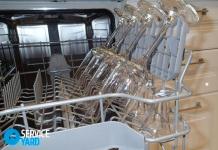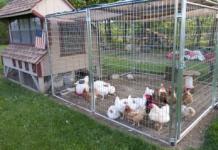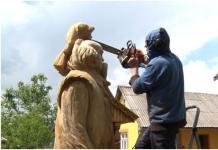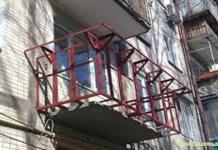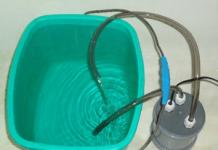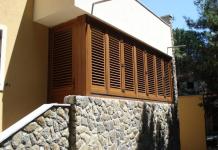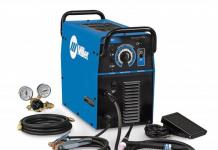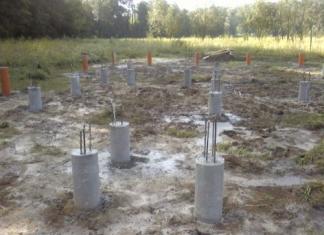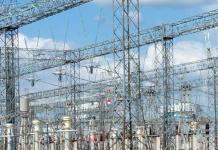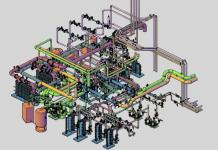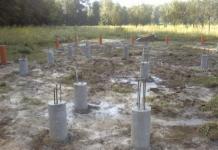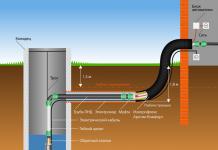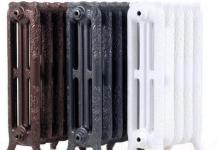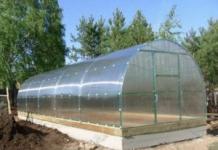Heating is one of the most important systems in any home. And if in an apartment building this issue is resolved centrally, then in a private one the choice remains with the owner. Recently, the popularity of heating boilers has been growing, which easily accept various types of fuel, which is very convenient, especially where there are difficulties with traditional energy sources - gas and electricity. At the same time, remember that when choosing a combined boiler for heating a private house, it is necessary to take into account a number of parameters, otherwise the equipment, instead of joy and satisfaction, will become a source of constant headache.
Types of boilers
To begin with, let's say that boilers are classified according to the number of circuits - with one or two. And double-circuit are divided into models with one or two heat exchangers. The former perform only the function of heating the room, while the latter are also used for heating water. Moreover, if there is only one heat exchanger, then priority is given to heating cold water and, accordingly, the water temperature in the heating system drops. If there are two circuits, this problem does not arise, because the processes of heating water for heating and washing occur independently of each other.
According to the type of control, boilers are electronic - they allow you to control various parameters as clearly and reliably as possible, and electromechanical - in the event of force majeure, for example, a power outage, they are easily transferred to manual control.
Boilers can operate on one, two, three or more types of fuel. The first are called specialized, and the second are combined, which we will discuss in detail in this article. But first, we note that there are various variations in the combination of energy carriers, but our conversation will be devoted only to the most popular combinations on the market.
Combined gas boilers
The following types are mainly in demand:
- gas and electricity;
- gas and solid fuel, which is usually firewood.
Consider the features of each type.
Gas-electric boilers
The design of the device includes a small combustion chamber in which the gas mixture is burned, and a heating element for generating heat from the mains, built into the heat exchanger. The transition from one type of energy to another can be carried out both manually and automatically, in the second case, complete and safe combustion of the gas mixture is guaranteed. In general, the protective equipment of this type of boiler is of the highest quality.
Equipment advantages:
- small weight and dimensions;
- high efficiency;
- ease of operation, because the equipment itself controls all the necessary parameters;
- cleanliness in the house, since there are no "dirty" combustion products;
- economy in maintenance.
Important! The boiler will be economical if it mainly runs on gas, and is connected to electricity only for quick heating of water. Therefore, if gas supplies are intermittent, it is better to choose a different combination of energy carriers.
There are only two cons, but they are significant:
- high cost of the boiler;
- the inability to carry out installation on their own, tk. the device has a complex design, therefore, additional costs for calling specialists will be required.
Operating features:
It is important to note that for the smooth operation of this type of boiler, a gas pressure of 3.5 mbar and a stable supply of fresh air are required. It is also necessary to periodically monitor the technical condition of all elements of the unit, especially sensors, pipes, locking mechanisms, and a pump.
Video - How to choose a heating gas or electric boiler for your home
Gas-wood boilers
There are models with both one combustion chamber and two. In the first case, it is used alternately for gas or firewood, which is not very convenient, because. the transition is carried out in manual mode, in addition, with this use, the heat exchanger often fails. In the presence of two combustion chambers, each is used for its own type of fuel. For gas - the lower one, a burner is installed in it, for firewood - the upper one, in which the grate is located, a chimney is also mounted there. The temperature in both chambers increases synchronously. In order to facilitate the process of cleaning the equipment as much as possible, the combustion products settle on a special tray.
The heat exchanger is located on top, in addition, to increase efficiency, a number of models have a water circuit running along all the walls of the boiler.
Advantages:
- profitability, because these two types of fuel are among the cheapest;
- independence - a supply of firewood will not allow you to lose heat and hot water, even with significant interruptions in gas supplies, and in case of emergency, bottled gas can be used;
- high efficiency, in some models it reaches 90%;
- affordable price.
Minuses:
- large weight and dimensions, since most often the device consists of two combustion chambers, and the material of manufacture is steel and cast iron, respectively, it is necessary to take care of a strong foundation;
- storage of firewood requires significant free space;
- periodic cleaning of the chimney and ash pan is required.
Step-by-step instructions for installing a double-circuit gas / wood boiler
Important. Despite the fact that the installation technology is quite simple, the presence of a gas component in the equipment requires that the installation process be carried out by professionals.
So, first you need to choose a place where the boiler will be installed. It should be convenient for use, it is better if it is a separate room, equipped with good ventilation or, in extreme cases, constantly ventilated. Also, special requirements are imposed on the foundation - it must be even and have a non-combustible base. The ideal option is a concrete screed or concrete slabs covered with iron sheets. When installing the boiler directly, the following requirements must be observed: the distance to the wall from the rear surface of the unit must not be less than 70 cm, and from the front - 125 cm.
After all conditions are met, start the installation of the boiler:
- Mount the pressure regulator (use a fum-tape for this), select a parameter of 30 ° C on it, fix the cone with a screw.
- Mount the heater thermostat. If you are not going to install it, then you need to install a stub.
- Next, a pressure gauge, safety and air valve are installed - they are always supplied with the equipment, making up the so-called. security group. Plug-in faucets or other locking devices will provide ease of maintenance and repair, so these should also be installed in this step. For sealing, you need to use fum-tape.
- The next step is to connect the chimney. The joint must be sealed with a heat-resistant sealant. Proper installation of the chimney, as well as its compliance with the requirements for height, cross-section and a number of other parameters given in the passport, provides good draft, and this is the main condition for the efficient operation of the boiler.
- Next, we connect water by opening taps and valves for hydraulic filling of the system.
We connect gas:
- We check the tightness: we increase the pressure to 1.3, while carefully monitoring the absence of leaks.
- We check the correct installation of the grate and fireclay stones, which could have shifted during transportation.
- The damper of the ignition chamber is pushed in, thereby improving traction.
- Next, with the help of a screw, they check the correct location of the plug for cleaning - the slot should close completely.
- Checking the gas burner.
- Before kindling, reduce the pressure to 1 atmosphere, check and close the damper of the kindling chamber, open the damper on the chimney.
What is the best way to equip the heating system in your home so that it is as convenient as possible for you? we will tell you how a heating boiler is installed in a private house, using the gas wall and floor options as an example.
Multi-fuel boilers
In addition to diesel fuel, manufacturers offer models that run on a variety of energy sources. The most popular combinations are as follows:
- gas, wood, electricity;
- gas, diesel fuel, electricity;
- gas, diesel and solid fuel;
- gas, diesel fuel, solid fuel, electricity.
In the first two cases, the electric heating element will always maintain the temperature of the coolant and will not allow the system to defrost if gas, wood or diesel fuel runs out. The last two options are universal, because. allow you to use the energy carrier that is available, but at the same time, these models have practically no automatic adjustment and reliable protection, therefore, during operation, almost constant human control is required.
There are also models on the market in which there is no possibility of connecting to gas. The most common combination in this case is electricity / solid fuel, which includes firewood, coke, coal, peat, wood briquettes. Next, we will consider in detail one of the varieties of boilers of this type, which are in the greatest demand on the market.
Electric wood boilers
The main elements of the unit:
- combustion chamber - located below, inside - a grate (firewood up to 60 cm in size is placed on it), under which there is a container for collecting ash;
- above the firebox there is a heat exchanger with heating elements, the surface of which blows hot air generated from the combustion of firewood;
- a control unit that monitors the temperature of the coolant and supplies voltage to the electric heaters in case of its decrease;
- all this is inside the case, from which the chimney exits.
The principle of operation of the boiler is as follows:
- In the process of melting the furnace and burning firewood, heat is released, which is transferred to the heat exchanger.
- A mechanical thermostat or a fan, together with a sensor, maintains the set temperature, and the heating elements are in the off state.
- When the firewood is burned, the water cools down, this fixes the temperature sensor, at the signal of which, when the carrier cools to the limiting point, the heating element turns on, and the boiler switches to electricity.
- After a new batch of firewood enters the furnace, the water is heated with solid fuel, the heating elements are turned off until the next cooling.
Strengths:
- thanks to the combined system, the house always remains warm, and even if firewood was not added at the right time, the pipes will not freeze, because. heating elements will automatically turn on;
- if electricity is metered according to a multi-tariff scheme, then it is beneficial to calculate the time so that the heating elements turn on at night, in addition, it is convenient - you don’t have to get up to throw firewood into the firebox.
Weak sides:
- the useful volume of the firebox is “eaten up” by heaters, as a result, the burning time from one load is reduced;
- the performance of the heating system also depends on the power supply;
- high cost;
- when the electric heaters are turned on, the efficiency decreases.
Video - Heating boiler Cooper. Review
Basic principles for choosing a combi boiler
Before purchasing equipment, decide on the following parameters:
- Type of fuel;
- required functions, i.e. the device should only heat the room or even heat the water, the number of circuits depends on this;
- offline function;
- the possibility of integration into the "smart home" system;
- when installing a special valve, the system operates silently;
- power.

Let's talk about the last criterion in more detail. So, it is desirable to choose more powerful boilers in order to obtain optimal heating at minimal cost. Otherwise, this will lead to additional costs for the heating system.
In addition, when the required power is exceeded, the unit starts to operate in a pulsed mode, which leads to rapid wear.
If the boiler power is low, then the remaining fuel will not be burned out due to lack of air, which leads to clogging of the chimney.
Reference. An approximate calculation of the required boiler power has a ratio of one kW per twenty square meters (for a well-insulated house).
If one of the fuels is solid, then consider such characteristics as:
- furnace volume- determines the frequency of fuel loading (naturally, the smaller the size, the smaller the time intervals);
- heat exchanger material- cast iron or steel. The first one is less susceptible to corrosion and produces heat transfer longer, but it also heats up longer, is damaged during an unexpected temperature jump, and is heavy. Steel ones are more susceptible to corrosion and oxidative processes, but they weigh less and are not afraid of temperature changes.
- grate material– cast iron or ceramic-coated. In ceramic spraying, bulk fuels are used, which require more oxygen, while cast iron is used for all types of solid fuels.
Rating of combined boilers
A large number of different models sometimes makes it difficult to choose even for specialists, not to mention ordinary buyers, so we publish the top 5 models. For clarity, we summarize the data in a table.
Table 1. The best models of 2018-2019
| Model | Fuel types | Description | power, kWt | Efficiency,% | Weight, kg |
|---|---|---|---|---|---|
| ZOTA MIX-20 | Coal, firewood, gas, diesel fuel, electricity | A model from a Russian manufacturer that consumes the main types of fuel without any problems. Withstands a short-term increase in pressure up to 4 atm (working 3 atm). The material of the heating elements is seamless stainless steel tube. Their work is controlled by an external control panel. Also, the device is equipped with a draft regulator and a thermomanometer, which increases the efficiency of the combustion process. To protect against heat loss, the water jacket is insulated. The wear resistance of the outer casing is achieved through powder coating. | 3-9 | 80 | 140 |
| KARAKAN 16TPEV 3 | Firewood, gas, electricity | The double-circuit model of the Russian manufacturer is especially popular with rural residents, because. equipped with a wide hob, on which they cook food for themselves and cattle. The unit will easily heat an area up to 160 sq.m., this applies not only to residential, but also to industrial premises, incl. greenhouse or garage. The depth of the steel firebox is 0.56 m. The “water jacket” prevents the metal from overheating or burning out, which makes the service life of the device long. | 9 | 75 | 120 |
| Teplodar Kupper PRO 22 | Firewood, coal, gas, pellets | The domestic model can easily heat rooms up to 220 sq.m. When using firewood or coal, the unit acquires the features of a long-burning boiler, since on one tab the operating period is 8 and 10 hours, respectively. Another plus is a capacious firebox, in which firewood up to 600 mm long is placed. | 6 | 80 | 115 |
| Kiturami KRM 30R | Firewood, briquettes, coal, diesel. | A double-circuit boiler from South Korea is equipped with several combustion chambers and electronic control. Able to heat a room up to 350 sq.m. The heat exchangers are made of alloy steel, so it is not worth increasing the pressure too much. | 35 | 85-92 | 170 |
| Protherm Bison 40 NL | Gas, diesel, fuel oil | A double-circuit model from Slovakia is capable of heating areas up to 400 sq.m. The control is carried out using a microprocessor, and the electronic display clearly shows the parameters of the boiler at any given time. | 38 | 89 | 148 |

Conclusion
How to choose the perfect boiler? It is impossible to answer this question unequivocally - it all depends on the specific needs of the buyer, the available budget, and the available types of energy carriers. The only thing is, when choosing a unit, follow the basic principles that were disclosed above so that the purchased equipment brings only joy and satisfaction.
Video - How to choose a combined boiler
Creating a comfortable microclimate is the main task of any type of heating. In our country, for a long time, heating was done in traditional ways - stoves and solid fuel or gas boilers. Today, underfloor heating systems are becoming more and more popular, they have undoubted advantages over traditional methods of space heating. But, unfortunately, they also have significant drawbacks that do not allow us to consider such a method as completely universal. A skillful and technically justified combination of traditional technologies with modern ones made it possible to create the best method of space heating - combined.
Combined heating systems have technical features that limit the scope of use. What requirements must the premises meet?
Availability of water heating
This is the main condition for installation. Underfloor heating systems can be connected in two ways.
- To existing heating boilers. The advantages of such a solution are a reduction in the estimated cost of equipment, a reduction in installation time. The disadvantage is that additional heating cannot function offline. This causes an increase in the consumption of thermal energy, the efficiency of using a warm floor decreases.
- Install hotel boilers for floor heating. The disadvantage is a significant increase in cost. Advantages - complete autonomy, warm floors can be used for minor space heating in case of a short-term or slight drop in temperature outside.

Apartment buildings have their own individual requirements: the existing engineering heating system must allow the connection of underfloor heating, permission is required for the installation of equipment from managing organizations.
Compliance of electrical communications with new power indicators
The condition applies only to cases where additional space heating is used electric floors. The power per square meter of heating elements ranges from 150–200 W, taking into account the area of \u200b\u200bthe premises, the total power reaches large values. Not all electrical wiring can withstand a significant increase in load, in addition, it is necessary to install a separate electrical safety fitting.

And one more problem. In some cases, the connection will require the permission of the owners of electrical networks. But they do not always issue it, they often refuse it under various pretexts: the technical capabilities of the transformer substation do not allow, overhead and cable lines are not adapted, etc.

floor covering requirements

One more caveat. Heating systems must constantly be in contact with cold air, heat exchange occurs due to convection and at the same time overheating of the equipment is excluded.
It is not necessary to install additional heating in rooms with a lot of furniture standing directly on the floor or in rooms where their location may change in the future.
The best option is to provide for the possibility of a combined heating system at the design stage of the building. In the case of installing equipment in operated premises, it is better to get advice from specialists, find out about the necessary permits, and only after that proceed with the installation of various systems and additional equipment.

By what criteria to choose boilers
This is a rather complicated question, and in order to make the right decision, it is necessary to dwell on it in more detail. From the point of view of the installation of additional heating systems, the technical indicators of the boilers are not of great importance, they all generate thermal energy in sufficient quantities, which makes it possible to connect the systems. But in practice, not everything is so simple. What are the heating boilers?
| Boiler type | Technical specifications |
|---|---|
| The optimal choice for combined heating systems. It can work in fully automatic mode, has excellent efficiency indicators. In the sale there are goods that differ in size, installation method (floor and wall), thermal power, number of circuits (single and double circuits), installed electrical equipment and fittings. A wide range of technical parameters and cost allows all buyers to choose the option that suits them. The only problem is that not all regions of our country have gas pipelines. |
| A modern boiler that fully meets the stringent requirements for safety, degree of automation and efficiency. It can be connected to "smart home" systems, which significantly improves the parameters of the microclimate in the premises and saves energy. Has two drawbacks. The first one is known to everyone - high power puts forward special requirements for electrical wiring, coordination with regulatory organizations is necessary. The second drawback is known only to practitioners. Water heating is carried out by a special heating element, its surface area is negligible. In many regions the water is very hard and hard salts are deposited on the heating element. The thickness of deposits of only one millimeter reduces the efficiency by about 5-10%. In addition, because of them, the process of heat exchange between the heater and water worsens, the temperature of its heating exceeds the critical one, this causes the device to quickly fail. As for various filters for water purification from salt solutions, their actual capabilities are very far from those advertised. |
| Most often used in summer cottages or in suburban villages in which there is no natural gas. Modern models increase the burning time of the fuel, which simplifies the operation of the boiler. But it is not recommended to connect them to combined heating systems due to the difficulty of adjusting the temperature of the heat carriers. |
All modern solid fuel boilers have another significant drawback, manufacturers do not mention it.
Problems of solid fuel boilers
Why do professionals strongly discourage connecting solid fuel boilers to combined heating systems? We will not dwell on the fact that the temperature of heating the coolant does not depend on the wishes of the residents, but on the physical characteristics and parameters of fuel combustion, this is understood by most consumers. Solid fuel boilers have another unpleasant drawback.
An increase in efficiency can be achieved in one way - to increase the amount of energy transferred from the fuel (fire and smoke) to the water tank. This is achieved by increasing the contact surface area and the duration of energy transfer. The dimensions of the container have a direct impact on the dimensions of the boiler; this parameter cannot be abused. To increase heat transfer, designers additionally slow down the combustion process by limiting the supply of oxygen to the fuel, so it burns for a long period of time. But reducing oxygen automatically reduces draft and smoke temperature.

All types of solid fuels produce a lot of ash and soot as a result of combustion, and with a lack of oxygen, their amount increases even more. The fuel has a certain moisture content, and steam is released during combustion. Steam condenses on the walls of the chimney, soot sticks to it, and over time, the draft completely disappears. This situation can lead to tragic situations.

Important. For solid fuel boilers, there is one important indicator. The temperature of the smoke at the outlet of their chimney cannot be lower than +120 ° C, under such conditions the pipes do not clog. None of the existing solid fuel boilers satisfies this requirement.
In houses with ordinary stove heating, chimneys are periodically cleaned by strong combustion; this cannot be done in modern closed heating systems. The water may boil, and the installed expanders are of a closed type. As a result - a rupture of plastic pipes, a boiler or a violation of the sealing of fittings.
Heating radiators
The technical parameters of heating radiators have a significant impact on the efficiency of the entire system.
| Type of radiators | Technical and operational parameters |
|---|---|
| Traditional, but outdated elements are large and heavy. Withstand working pressure up to 10 atm., test more than 15 atm. The service life is at least 50 years, it is possible to change the number of sections of one battery. Compatible with all standard pipelines, heat dissipation within 120W, but this figure can vary significantly depending on the number of layers of paint and the thickness of the dust. Cons - ugly design, features of the production process are not allowed to create a modern appearance. |
| They are light in weight and have great heat dissipation. Working pressure up to 12 atm., have a more modern design. The number of sections may vary depending on the size of the premises. The cost is significantly superior to cast iron. |
| The main metal is aluminum, the tubes are made of steel (resistance to high pressure increases). The most expensive radiators have an excellent design. |
| Currently, they are rarely used. Advantages - low cost. The disadvantage is that there is a high probability of leakage in poor-quality welds, a small heat transfer area. Another drawback is that steel radiators have standard sizes. |
Prices for heating radiators Rifar
Heating radiators Rifar
Types of floor heating systems
There are two fundamentally different systems, consider their strengths and weaknesses. The choice of scheme will affect the comfort of staying in residential premises, keep this in mind when making a decision, take into account not only the technical parameters of various schemes, but also the features of the premises and existing heating systems.
Water heated floor
Allows you to get a uniform floor heating, compatible with some existing heating systems for old houses. The disadvantages include the complexity of equipment and installation work and the high estimated cost. In addition, the water system reduces the height of the room by at least 10 cm due to the concrete screed. To create a wiring diagram, the room is divided into separate sections, taking into account the size and configuration of the floor, each circuit must have approximately the same length of pipes, otherwise the heating will be uneven over the area. Depending on the construction technology, the water floor may have several installation schemes.
- On a concrete base. It consists of a layer of thermal insulation on a concrete base, a metal mesh for laying pipes, pipelines, an upper screed and a finishing floor covering.




- Polystyrene. There is no need to do a more modern method of laying a water-heated floor, a cement-sand screed. Special polystyrene plates with places for fixing plastic pipelines are laid on the heat-insulating layer. The finished wiring is covered with gypsum fiber boards, on which the finishing flooring is laid.


A common disadvantage of water floor heating is that emergency situations have very serious consequences. The most complex elements of a water-heated floor are a mixing unit and a collector.
Description of types of mixing units
The mixing unit provides a constant and balanced circulation of heated water along the laid circuits, changes the speed of movement, and independently maintains the set temperature for heating the floor and the coolant. Depending on the design features, it can have several types:
- with serial water pump connection and two-way thermal valve;
- with serial water pump connection and three-way thermal valve;
- with a series connection of a water pump, a three-way thermal valve operates with flows converging in one node;
- with parallel water pump connection, two-way thermal valve;
- the water pump is connected in parallel, the thermal valve is three-way.

Each scheme has its own characteristics, the selection is carried out taking into account the technical parameters and the number of heating circuits.

Video - Combined heating systems and their connection
Distribution headers
Designed for connection in one place of all heating devices of the floor heating system. Depending on the range and quantity of additional special equipment, they can be simple and advanced. Simple ones do not have any fittings and serve only to connect fittings. Advanced ones have control sensors, execution devices, measuring instruments, etc.
Electric and infrared underfloor heating
In electrical systems, wiring is done with cables that heat the floor coverings. This option is considered obsolete, manufacturing companies offer a more modern solution for underfloor heating using electricity - infrared. For heating, special films with carbon heating elements are used.

The advantages of electric underfloor heating are ease of installation and no wet steps.

Another advantage is that the thermostat can be installed in any inconspicuous place, the dimensions of the device are only a few centimeters.


Space heating requires the heaters to have a maximum output of 100 watts per square meter and an average power consumption of 20-40 watts. Such operational characteristics greatly simplify the installation process, a slight increase in electrical energy consumption often does not require prior approval from the owners of the companies. It is for this option that we will give step-by-step installation instructions.
Installation of electric floor heating in a combined heating system
In addition to the main heating system, a heated floor with electric heating under ceramic tiles will be installed. We have already mentioned that this is the best option in all respects. We take into account that the thermal insulation layer has already been installed.

Step 1. Calculate the area of the room and buy a floor heating system. The specific brand does not matter, all responsible manufacturers produce products with similar technical characteristics. Check the completeness of the equipment, read the attached instructions.

Step 2 Draw a diagram of the room, taking into account the location of furniture and large household appliances. Consider cutting the heating plates.


Important. Before you start cutting mats, read the manufacturer's recommendations. Wrong cutting can ruin them completely.
Step 3 Prepare a hole in the wall for the system control panel, it can be located in any convenient place. But you should try to reduce the distance from the wiring for power supply, while determining the installation location of the control panel, consider the way to connect the power. Simultaneously make grooves for cables and sensor. You can work with an electric puncher or manually with a chisel and hammer.

Step 4 Temporarily fix the remote control box with a plaster solution, bring corrugated hoses of electrical cables and temperature sensor installations to it. At the same time, keep in mind that the sensor cannot be located directly at the heating elements, such a position will distort the measurements.


Step 5 Remove dust and construction debris from the floor surface. To increase the strength of the surface of the screed, you can prime it, choose deep penetration compounds.

Step 6 Taking into account the previously drawn sketch of the layout of the heating elements, cut them and lay them on the base. Perform work very carefully, do not damage the conductive elements.


Practical advice. If the wires in the grid cannot be laid on the floor area, then they can be stretched in waves and fixed with adhesive tape.

Step 7 Attach contacts to the limit switches for connecting power. In order for the limit switches not to protrude above the floor plane, small recesses must be made under them.

Wire connected. A recess is made in the underlay
Step 8 Route the power cables to the control box. It is recommended to lay them under skirting boards, in these places they will not overheat.

Step 9 Install a temperature sensor in the corrugated pipe and lead its wire into the box.
Step 10 Using a tester, check the reliability and correctness of all connections. Remember that according to European standards, the color of the insulation of the ground wire is yellow with a green longitudinal stripe. The insulation resistance must be at least 10 mΩ, test it with an ohmmeter.


Step 11 Connect all wires to the control panel according to the attached diagram. Apply power for a short time and check the operation of all elements, turn off the power, wait until the heating elements have completely cooled down.

Step 12 Cover the system with a thin layer of self-leveling floor.


Turn on the combined system depending on the temperature in the room and the climatic conditions outside.
Video - Combined heating system. Radiators and underfloor heating, scheme
When they talk about the combined heating of a private house, they often mean different concepts. It is possible to combine within the same heating system various types of heating devices with their inherent wiring diagrams or heat generators using different types of fuel, or generally operating on the basis of different physical principles.
Combination of various systems and heating devices
It is difficult to call a combined system in which cast-iron batteries are installed on one branch, aluminum radiators on the other, and steel radiators on the third. According to the principle of heating, connection and structurally, these heaters are extremely similar and completely interchangeable. Convectors built into the floor are not so different from wall-mounted radiators. The wiring diagram for these devices is identical, moreover, radiators and convectors can be connected to one branch (circuit). There is a really big difference between traditional radiators and relatively new types of heating that are completely built into building structures - underfloor heating and walls.
Combination of radiators and heated floors
Both radiators and water heated floors, along with advantages, have some disadvantages. The combination of these two types of heating allows you to find the most comfortable, convenient and aesthetic solution for each room or area of \u200b\u200bthe dwelling. For example, often the best option for a winter garden and a hallway is underfloor heating, bedrooms - a panel radiator, and a living room and a pool - combined heating: the main heating is carried out by underfloor heating, radiators and convectors - additional.
The conditions and principles of operation of radiators and underfloor heating vary significantly. The former can be connected according to various schemes: one-two-pipe, radial, the system can be open, closed, gravitational or circulating. Heating floors, if there is more than one heating branch, it is possible to connect only according to the collector (beam) scheme.
A combination of different heating schemes is quite acceptable: the wiring of radiators is two-pipe, and the branches of the warm floor are radiant. In any case, the latter is connected to the risers not directly, but through a mixing unit, where a three-way valve mixes hot and chilled water from the supply and return lines to reach the desired temperature.
The combined heating system will carry the limitations inherent in underfloor heating: it can only be sealed (closed) and circulating. There is no difficulty in combining different schemes in one heating system: both circuits (radiators and floor) are connected to a common riser (boiler circuit).
The coolant does not enter the floor circuit directly, but through a mixing unit, where, if necessary, chilled water from the return line is mixed with it so that the floor temperature does not exceed a comfortable level of 40 ºС. After mixing, the coolant enters the collector combs, from where it is distributed over separate branches. The total pressure in the system is not enough to "push through" the warm floors, so they are supplied with a separate circulation pump.
But the optimal hydraulic balance, which means the best thermal regime, can be achieved if both floors and radiators are connected according to a beam pattern. At the same time, heating devices of different types must be hydraulically separated: each system has its own collector on the floor.

A little space and money can be saved if all appliances are connected via a universal manifold for a combined heating system. This is a two-in-one device that combines a collector for radiator heating (bottom left) and underfloor heating (top right)

Nevertheless, the use of different types of heating in one system, plus the need to heat water for hot water supply, leads to the fact that various circuits begin to affect each other's work. To reduce this effect and balance the combined heating system in the best possible way, the boiler circuit is connected to the radiator circuits, underfloor heating and hot water supply through a hydraulic arrow
We heat-cool walls and floors
Heat engineers argue that the larger the heating area of the heater and the lower its temperature, the more comfortable and favorable conditions for health are created in the house. The practice of long-term operation of warm floors confirms this fact. It is not for nothing that in Germany 95% of newly built houses are equipped with a combined heating system with underfloor heating on the first floor and radiators on the second.
But today they are no longer limited to floor heating, the popularity of “warm walls” is growing. The principle of operation and design is quite similar to the underfloor heating system: tubes with a coolant circulating through them are built into the building structures of the walls. Thus, in the room, in addition to windows, there are no cold surfaces left, there are no strongly heated objects. Heat is distributed evenly and mostly through infrared radiation, which our body perceives in the most positive way. Warm water walls, like floors, are connected by separate branches according to a ray pattern.
Floor collectors must be equipped with circulation pumps and, if necessary, mixing units (maximum coolant temperature 60 ºС). Warm walls have proven themselves not only in countries with a cold, but also with a fairly warm climate. In the summer, in the heat, chilled water is circulated through the pipes, the system replaces the air conditioner.

The wall heating pipes have been installed, it remains only to monolith them, hiding them in a layer of plaster. A great solution in terms of comfort, but you need to remember two things: the outer walls must be well insulated, and carnations must be hammered in to hang the picture carefully.
Various types of heat generators in one system
Combined can be not only wiring using different types of heating devices, but also heat generation: for heating one house, boilers using different types of fuel and even heat sources can be used, the operation of which is based on different physical principles.
Use of multiple fuels
The use of multi-fuel boilers in one system may be due to several considerations:
- The desire to improve the reliability of the system. Often, practical owners, having connected the gas pipeline to a residential building and installed a gas boiler, leave the solid fuel one that has already worked. In the event that an accident occurs in a gas pipeline or with a new boiler, you can always bring firewood and “fire up” the old one. In any case, the more ways of heating a house has, the less its dependence on external cataclysms.

The possibility of direct integration of two different hot water boilers into one heating system must be decided on the basis of the characteristics of the particular equipment. For example, a gas boiler will perform better in a closed system, and many solid fuel boilers are designed for open systems. In this case, the heating of the heat carrier from the wood-burning heat generator circuit occurs indirectly, through an additional heat exchanger
- The desire to save money without sacrificing comfort. This applies to residential buildings located in non-gasified areas. As a rule, in the absence of natural gas, it is more profitable to heat a home with local fuel: firewood and wood waste, coal, fuel briquettes. However, the unevenness of heat generation during the combustion of solid fuels, the need for constant maintenance of solid fuel boilers makes such heating uncomfortable and troublesome. At the same time, very convenient and fully automated electric and liquid fuel heating significantly devastates the owner's budget - diesel fuel and electricity are now in price. In addition, the diesel fuel in the tank may run out, and the electricity in the village will be turned off for a day or two.
In this situation, the combined heating system of a private house can reduce the severity of problems, different heat generators partially compensate for each other's shortcomings. For example, electric heating (electric boiler, cable floors, electric convectors) can only be turned on from evening to morning, when a preferential tariff is applied, almost half as much. Stoke with firewood when there is time and desire to throw them into the firebox and shovel out the ashes. And diesel fuel - when there is no way to mess with solid fuel, but there is money for diesel fuel. Recently, more and more popular in those houses where there is no gas is the tandem "pellet boiler during the day + electric heating at night", this is a fairly comfortable and not very expensive combination to operate.

Combined heating with pellets during the day and electricity at night (at a reduced rate) is a completely rational combination: a reasonable price and a minimum of hassle

In order to have combined heating, it is not at all necessary to install several heat generators in the boiler room. One is enough, but multi-fuel. For example, Finnish boilers of the Jaspi series from Tulpa are practically “omnivorous” - gas / diesel / oil / firewood / briquettes / electricity
Combination of water and air heating
Nobody bothers to have a hot water boiler and a stove in the house at the same time. Or a fireplace, which will serve as an additional, and in the event of a boiler breakdown, an emergency source of heating. It is possible to purchase a fireplace insert with a built-in water jacket and integrate it into a water heating system. But it costs money and is financially unjustified if the hearth is not heated infrequently. If the goal is to distribute air heating not only to the living room where the fireplace is installed, but also to other rooms, it is possible to lay air ducts in the rooms and forcibly, with the help of a fan, supply heated air there. They take warm air from special convectors of the double body of the furnace or from a thermally insulated hood of the lining.

To make the most of the heat from a wood-burning fireplace, air ducts can be run into the rooms. Air heating can supplement water
Different physical principles of heat generation
A combined heating system can also be built on different physical principles for obtaining thermal energy. We have already talked about heating boilers that use the energy of fuel combustion. They mentioned direct heating electric heaters, in which electrical energy is converted into heat. In practice, two more types of promising heat generating devices are used that use "free" energy from renewable sources: solar collectors and thermodynamic heat pumps. The first "catch" solar heat with collector panels. The physical principle of the latter is more like a refrigerator or air conditioner.

If very simplified, then a heat pump is a refrigerator in reverse.
Nevertheless, such different heat-generating devices coexist perfectly in one system, if the circuit is assembled correctly. As a rule, solar panels are used to heat hot water, a heat pump is used as the main and very cheap to operate heating, and an electric or pellet boiler is “on duty on safety net”.

When combining a heat pump, a hot water boiler and a solar collector in one heating system, a heat storage device is indispensable
The design and installation of combined heating systems for a private house requires a special approach, the efficiency depends on the competent interconnection of systems.
Video: combined heating systems and their connection
Good day to all my readers! In this article I will tell you briefly about combined heating systems. They are very popular at the moment and are used everywhere. It may very well be that you decided to make one at home. I won't bore you with long introductions and get straight to the point!

A combined heating system is a heating system (hereinafter referred to as CO) in which several methods of space heating are used. For example, it can be heating a room with a stove and. The latter are most often used to heat the room after the fuel burns out in the furnace. Instead of convectors, an electric underfloor heating or an air conditioner working for heating can be used. Well, the CO option with a conventional heating boiler and a heat pump will be completely exotic.
Combined can be considered CO, which uses two or more heating devices that operate on different types of fuel. So, for example, in our country a scheme is common in which the main gas boiler is duplicated or. At the same time, I believe that the solid fuel option is better here. Since light and gas can go out at the same time, and solid fuel can always be on hand in such a case. If your CO uses forced circulation of the coolant, then you will need to maintain operation and automation.
Well, if you want complete autonomy from the outside world, then you can do two things:
- Gravity heating system - the coolant circulates in it under the influence of gravity.
- Furnace - the room is heated by radiation from the furnace itself, which is made of bricks.


These options have their advantages and disadvantages, but we will talk about this separately in the following articles of this blog. And now let's look at the most popular combination of ways to heat a room.
Heating system "radiators plus underfloor heating".
I will say right away that this option is now used wherever possible. Its popularity is explained by the increase in the comfort of living in a private house. You can forget about warm socks and slippers and just walk on the comfortable warm floor.
The essence of such CO is that the heat losses of the room are divided between radiators (or other heating devices) by a warm floor. Here, high-temperature and low-temperature heating work in tandem. If anyone is not in the know, let me remind you that the temperature of the coolant in radiators can reach up to 90 degrees, then in warm floors it should not exceed 50. This allows you to achieve a comfortable floor surface temperature.


In addition to VTP, electric underfloor heating can be used. In some cases, it will be much cheaper to lay a cable or heating mat in a screed than to pull pipes and make manifold cabinets. Only electricity bills will increase, but this can sometimes be tolerated.
The results of the article.
As a result, we can say that it is possible and necessary to use combined heating systems. You need to start here with a project. A well-designed project will help minimize installation and operation costs. It’s not worth chopping off your shoulder and doing like a neighbor’s, otherwise you can “fly through” on payments for electricity, gas or coal. I'll break on this! I look forward to your comments and questions
Combined heating is an effective technical solution used to increase the flexibility of the space heating system. Design solutions are usually implemented in two directions - and the integration of different types of heat sources. The material of the publication gives an overview of the most popular and high-quality options for the joint operation of various heat generators.
 Combination of floor standing solid fuel and wall mounted gas boilers
Combination of floor standing solid fuel and wall mounted gas boilers The integration of boilers is most often implemented with an unstable supply of one or another energy carrier. Combining boilers to work on one heating system requires the use of additional devices - primarily heat accumulators, as well as hydraulic separators (hydraulic arrows), collectors, and so on. The methods of tying the boiler room depend on the types of boilers used.
There are the following most common options for combining boilers:
- Solid fuel and electric;
- Solid fuel and gas;
- Gas and electric.
Option 1. The combination of a solid fuel and an electric boiler is most often caused by power outages, as well as its high cost. The algorithm for the joint operation of heat generators of this type is based on the possibility of installing a two-tariff meter.
In addition to the considered combinations of thermal equipment, various types of heating are often combined, independent of each other. There are many variations - most often separate electric heating devices are used, air heating in forced ventilation systems, metal stoves, fireplaces, gas heaters and much more are used as additional heat sources.
The use of various combinations of thermal equipment performs important tasks - it increases the reliability of the heating system, guarantees uninterrupted heat supply, in some cases reduces energy costs, improves the quality of control and the maneuverability of the complex. At the same time, the heat generating unit often becomes more complicated; it is recommended to involve experienced specialists for its development and installation.










